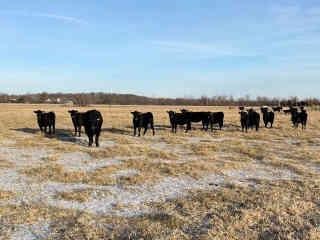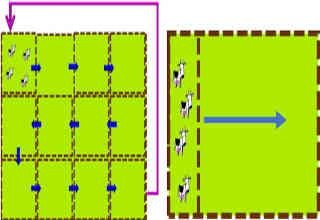The first alternative for minimizing the forage gaps is reducing the stocking rate. This is the moment to sell older animals, cull cows, and any other animals that for some reason do not contribute to the system or needs to be replaced. It’s time to rethink the herd composition.
Stockpiling fescue
On the other hand, stockpiling tall fescue is a possibility to increase forage yield. By stockpiling, producers can graze warm-season forages longer and reduce the amount of hay needed to feed cattle during the winter, decreasing overall expenses in the forage-livestock operation.
In a trial carried out in Columbus, KS, the addition of 40 or 80 units of N/acre in late August, increased the yield from 630 lbs./acre (not fertilized) to 1,010 and 1,670 lbs./acre in December. Crude protein was also enhanced from 6.6 to 9.1 and 8.9%, respectively. The best cost/benefit was observed when 80 units of N/acre were applied, which cost $134 per extra ton of forage produced. It means that 16.4 lbs. of forage were produced for each dollar spent buying nitrogen ($800/ton of urea).

Figure 1. Animals grazing stockpiled pastures. Photo by Bruno C. Pedreira, K-State Research and Extension.
Rotational and strip grazing
Farmers can also consider investing in electric fences to improve forage utilization efficiency. Pastures can be divided into two, three, four, or more paddocks for rotational grazing, or a strip paddock can be created to be moved as needed (Figure 2). Thus, the animals will be grazing when and where needed, and the forage plants in the other paddocks will have a chance to grow during the rest period. It helps to extend the grazing season, minimizing the need for hay earlier in the fall. Rotational grazing can change the utilization efficiency from 30-40% (continuous grazing) to 50-70%. Strip grazing, which costs even less, can result in a utilization efficiency higher than 70%.

Figure 2. Rotational (left) or strip grazing (right) using electric fence. Graphics by Bruno Pedreira, K-State Research and Extension.
Small grain cereals
If all of the strategies mentioned above are not enough to offset the forage gaps in the system, small grain cereals may be an alternative to increase forage production during the fall. Pure stands, mixture, or overseed in perennial grasses can be options. Overall, seed rates need to be from 25 to 50% higher when used as forage and the soil pH from 6.5 to 7 is required. After planting (September/October), it is necessary to wait for 6 to 8 weeks before allowing for grazing. Make sure roots are firmly anchored before grazing. The most concern for small grain cereals, in a hot and dry year like 2022, is the weather uncertainty to ensure adequate forage establishment. More details about small grain cereals can be found at: https://bookstore.ksre.ksu.edu/pubs/mf1072.pdf.
At this point, the only certainty is that a decision needs to be made to minimize the lack of forage produced during the growing season. Relying on the weather may be a risky decision.
Source : ksu.edu